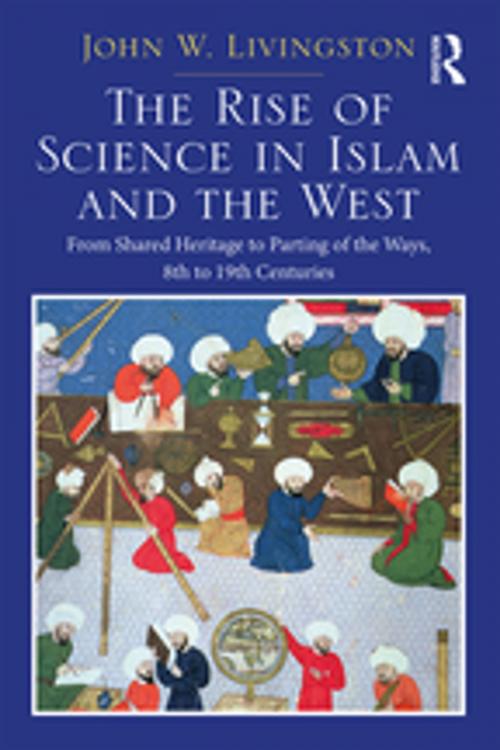The Rise of Science in Islam and the West
From Shared Heritage to Parting of The Ways, 8th to 19th Centuries
Nonfiction, History| Author: | John W. Livingston | ISBN: | 9781351589253 |
| Publisher: | Taylor and Francis | Publication: | December 14, 2017 |
| Imprint: | Routledge | Language: | English |
| Author: | John W. Livingston |
| ISBN: | 9781351589253 |
| Publisher: | Taylor and Francis |
| Publication: | December 14, 2017 |
| Imprint: | Routledge |
| Language: | English |
This is a study of science in Muslim society from its rise in the 8th century to the efforts of 19th-century Muslim thinkers and reformers to regain the lost ethos that had given birth to the rich scientific heritage of earlier Muslim civilization. The volume is organized in four parts; the rise of science in Muslim society in its historical setting of political and intellectual expansion; the Muslim creative achievement and original discoveries; proponents and opponents of science in a religiously oriented society; and finally the complex factors that account for the end of the 500-year Muslim renaissance.
The book brings together and treats in depth, using primary and secondary sources in Arabic, Turkish and European languages, subjects that are lightly and uncritically brushed over in non-specialized literature, such as the question of what can be considered to be purely original scientific advancement in Muslim civilization over and above what was inherited from the Greco–Syriac and Indian traditions; what was the place of science in a religious society; and the question of the curious demise of the Muslim scientific renaissance after centuries of creativity. The book also interprets the history of the rise, achievement and decline of scientific study in light of the religious temper and of the political and socio-economic vicissitudes across Islamdom for over a millennium and integrates the Muslim legacy with the history of Latin/European accomplishments. It sets the stage for the next momentous transmission of science: from the West back to the Arabic-speaking world of Islam, from the last half of the 19th century to the early 21st century, the subject of a second volume.
This is a study of science in Muslim society from its rise in the 8th century to the efforts of 19th-century Muslim thinkers and reformers to regain the lost ethos that had given birth to the rich scientific heritage of earlier Muslim civilization. The volume is organized in four parts; the rise of science in Muslim society in its historical setting of political and intellectual expansion; the Muslim creative achievement and original discoveries; proponents and opponents of science in a religiously oriented society; and finally the complex factors that account for the end of the 500-year Muslim renaissance.
The book brings together and treats in depth, using primary and secondary sources in Arabic, Turkish and European languages, subjects that are lightly and uncritically brushed over in non-specialized literature, such as the question of what can be considered to be purely original scientific advancement in Muslim civilization over and above what was inherited from the Greco–Syriac and Indian traditions; what was the place of science in a religious society; and the question of the curious demise of the Muslim scientific renaissance after centuries of creativity. The book also interprets the history of the rise, achievement and decline of scientific study in light of the religious temper and of the political and socio-economic vicissitudes across Islamdom for over a millennium and integrates the Muslim legacy with the history of Latin/European accomplishments. It sets the stage for the next momentous transmission of science: from the West back to the Arabic-speaking world of Islam, from the last half of the 19th century to the early 21st century, the subject of a second volume.















